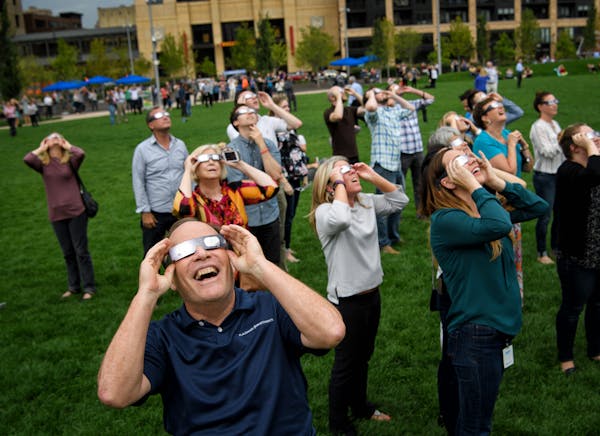For "Ring of Fire" eclipse watchers Saturday, the message from NASA is clear: Wear proper protective eyewear at all times when looking directly at the sun, even when it's partially or fully covered by the moon.
Viewing any part of the bright sun during a solar eclipse can instantly cause severe eye damage, space scientists warn. You'll need specialized eye protection glasses designed for solar viewing — or you can use a handheld solar viewer, which filters out harmful rays, to watch one of nature's grandest spectacles.
Regular sunglasses, even very dark ones, and most welding filters don't provide adequate protection from the sun. They transmit too much sunlight, which can be harmful to your eyes.
Do eclipse glasses and handheld viewers last?
You may reuse them indefinitely as long as they aren't torn, scratched or otherwise damaged. However, it's important to always inspect your eclipse glasses or handheld viewer before each use. Discard them if you notice any damage and get a new one.
Where to buy eclipse viewers/filters
In the weeks before the "Great American" total solar eclipse in 2017, the market was flooded with counterfeit eclipse glasses that were labeled as ISO-compliant even though they were not properly tested.
Make sure the item you use complies with ISO 12312-2 (sometimes written as ISO 12312-2:2015), which is the international standard for solar viewers.
The American Astronomical Society provides a list of trusted suppliers who sell safe solar filters and viewers, including brick-and-mortar and online retail stores. If you're planning to visit a local store, call ahead to check availability.
What if I can't find certified eclipse glasses or a viewer?
Make your own. A popular alternative is a homemade pinhole projector, which allows for indirect viewing of the partially or annularly eclipsed sun. It involves poking a small hole in an index card and projecting the image of the eclipse onto a nearby surface, such as a sheet of cardboard, a wall or the ground. With the sun behind you, you can then view the projected image.
Just remember not to look at the sun directly through the pinhole.
When might the eclipse be visible in Minnesota?
According to the University of Minnesota's Bell Museum, which is holding a viewing party from 10 a.m. to 2 p.m. on Saturday, the eclipse will be at its peak here at about 11:45, and — weather permitting — we'll see about 45% of totality.
Additional tips to ensure a safe eclipse viewing experience
- Always supervise children when they're using solar viewers.
- If you wear eyeglasses, put your eclipse glasses over them or hold your handheld viewer in front of them.
- Make sure to turn or look away from the sun when removing the viewers.
- Avoid using eclipse glasses or handheld viewers with cameras, binoculars, or telescopes. They require different types of solar filters.
- If you're using cameras, binoculars or telescopes equipped with proper solar filters — which must be attached to the front — you don't need to wear eclipse glasses when viewing a partial or annular eclipse. NASA recommends getting expert advice from an astronomer before using a solar filter with any optical device.
- If you are watching an entire eclipse, it's also crucial to protect your skin from direct sunlight. Wear sunscreen, a hat and protective clothing to prevent skin damage.

Want to share info with the Star Tribune? How to do it securely

'Safe recovery sites' would offer syringes, naloxone and more to people using drugs. The plan could be in peril.
New Minnesota GOP leaders seek peace with party's anti-establishment wing

Who is Republican Lisa Demuth, Minnesota's first House speaker of color?

